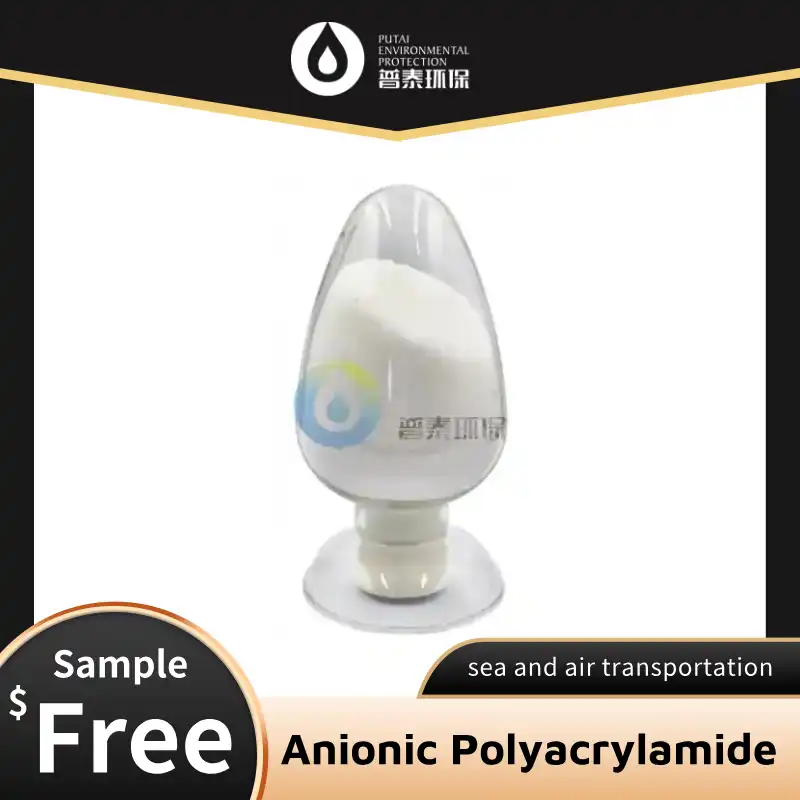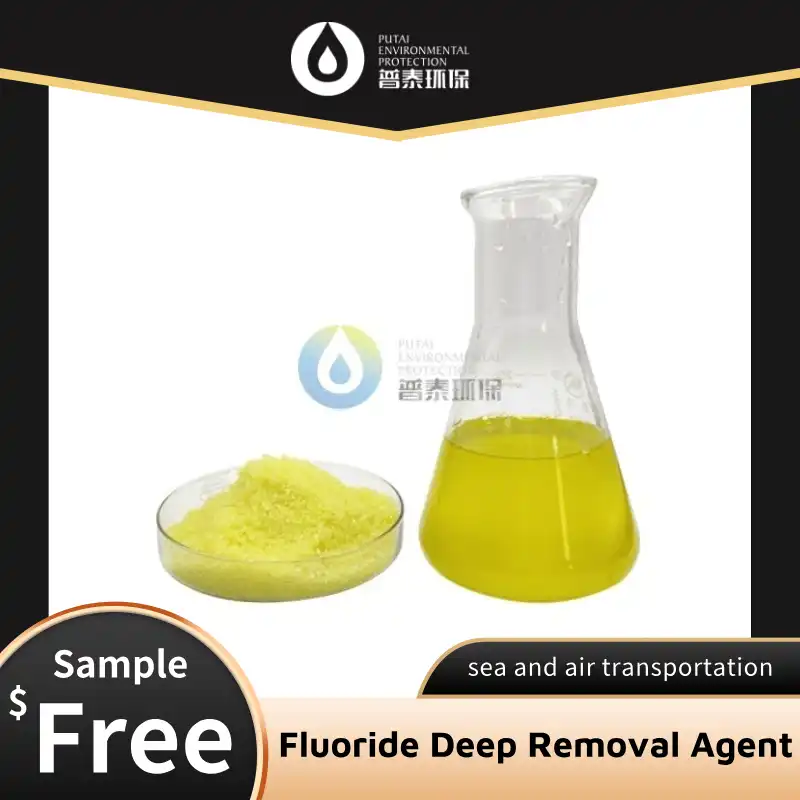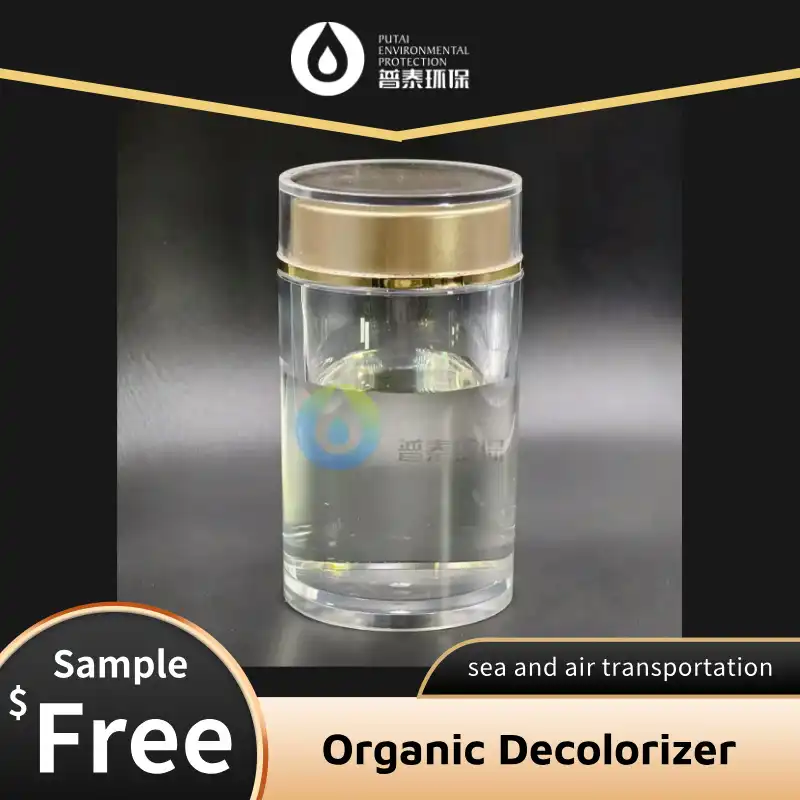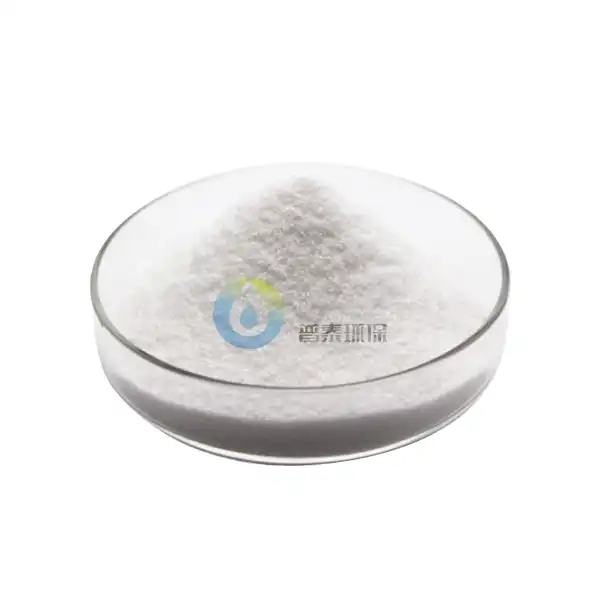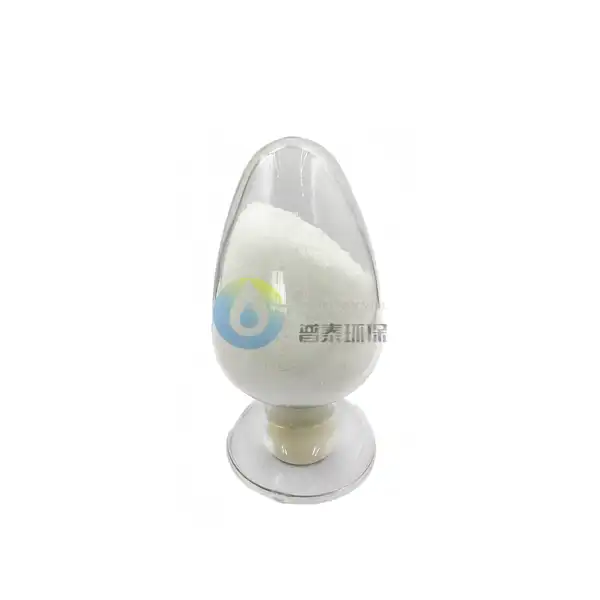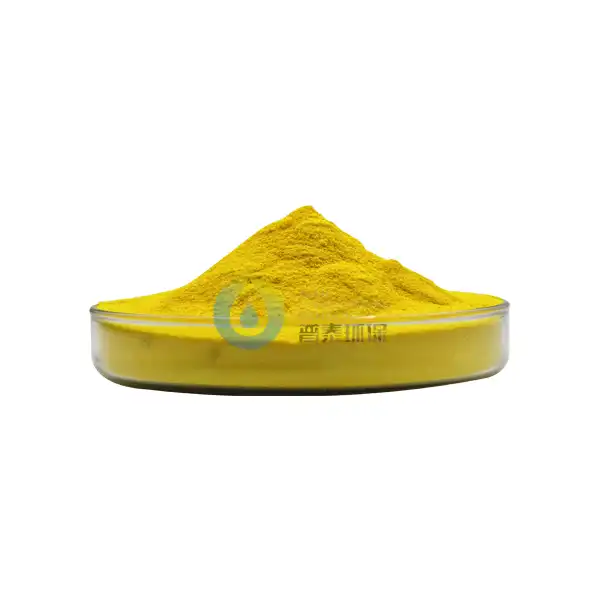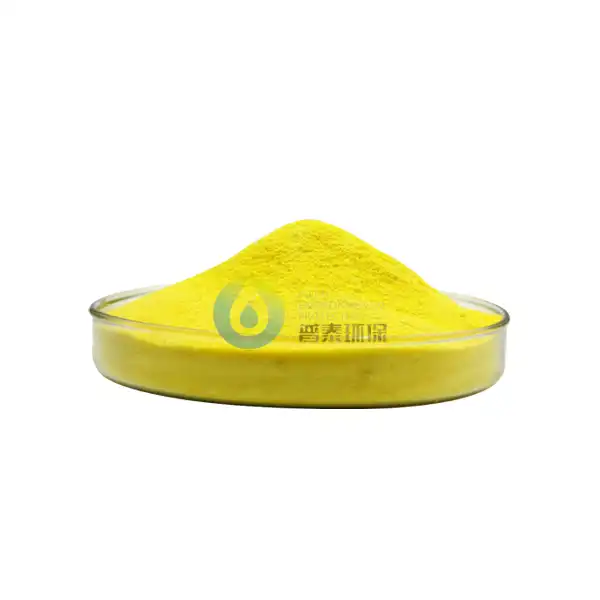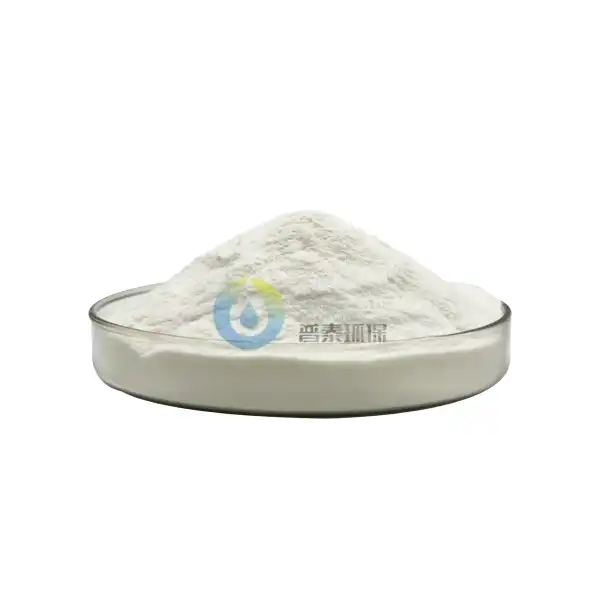How long does it take for a Highly Effective Organic Decolorizer to remove color from wastewater?
Wastewater treatment is a critical process in maintaining environmental health and sustainability. One of the key challenges in this field is the removal of color from industrial effluents, particularly those from textile, paper, and chemical industries. A Highly Effective Organic Decolorizer has emerged as a promising solution to this problem. But a common question that arises is: How long does it take for a Highly Effective Organic Decolorizer to remove color from wastewater? This blog post will explore this question in depth, discussing the factors that influence the decolorization process and the typical timeframes involved.
What factors affect the speed of color removal by a Highly Effective Organic Decolorizer?
Chemical composition of the wastewater
The chemical composition of the wastewater plays a crucial role in determining the speed at which a Highly Effective Organic Decolorizer can remove color. Different types of dyes and pigments have varying levels of resistance to decolorization. For instance, azo dyes, which are widely used in the textile industry, are known for their recalcitrance to conventional treatment methods. However, a Highly Effective Organic Decolorizer is specifically designed to target these challenging compounds. The presence of other organic and inorganic substances in the wastewater can also influence the decolorization process. Some compounds may interfere with the action of the decolorizer, while others may enhance its effectiveness. Therefore, a thorough analysis of the wastewater composition is essential to predict and optimize the decolorization time.
Concentration of the dye in the wastewater
The concentration of the dye in the wastewater is another critical factor that affects the speed of color removal. Generally, higher dye concentrations require longer treatment times. However, a Highly Effective Organic Decolorizer is designed to handle a wide range of dye concentrations efficiently. In some cases, the decolorizer may need to be applied in multiple stages or at higher dosages to achieve complete color removal in heavily contaminated wastewater. It's worth noting that the relationship between dye concentration and decolorization time is not always linear. Some Highly Effective Organic Decolorizers exhibit enhanced performance at certain concentration ranges, which can be leveraged to optimize the treatment process.
Environmental conditions during the treatment process
Environmental conditions such as temperature, pH, and dissolved oxygen levels can significantly impact the performance of a Highly Effective Organic Decolorizer. Most organic decolorizers have an optimal temperature range within which they function most effectively. Similarly, pH plays a crucial role in the decolorization process, as it can affect the stability and reactivity of both the decolorizer and the dye molecules. Dissolved oxygen levels are particularly important for certain types of Highly Effective Organic Decolorizers that rely on aerobic processes. By carefully controlling these environmental parameters, it's possible to significantly reduce the time required for color removal. Some advanced treatment systems incorporate real-time monitoring and adjustment of these conditions to maintain optimal decolorization efficiency throughout the process.
How does the type of Highly Effective Organic Decolorizer affect the treatment duration?
Enzymatic decolorizers
Enzymatic decolorizers are a type of Highly Effective Organic Decolorizer that utilize specific enzymes to break down dye molecules. These decolorizers are known for their rapid action and can often achieve significant color removal within a few hours. The speed of enzymatic decolorization depends on factors such as enzyme concentration, substrate specificity, and the presence of enzyme inhibitors or activators in the wastewater. One advantage of enzymatic decolorizers is their ability to work under mild conditions, which can reduce energy costs associated with the treatment process. However, the effectiveness of enzymatic decolorizers can be sensitive to changes in environmental conditions, and they may require careful handling and storage to maintain their activity over time.
Microbial decolorizers
Microbial decolorizers are another category of Highly Effective Organic Decolorizer that harness the power of microorganisms to break down dye molecules. These decolorizers typically require longer treatment times compared to enzymatic methods, often ranging from several hours to a few days. The duration of microbial decolorization depends on factors such as the type and concentration of microorganisms used, the growth rate of the microbial population, and the complexity of the dye molecules. One advantage of microbial decolorizers is their ability to adapt to changing wastewater compositions over time. However, they may require a longer initial setup time to establish a stable microbial community, and their performance can be affected by the presence of antimicrobial agents in the wastewater.
Chemical decolorizers
Chemical decolorizers are a third type of Highly Effective Organic Decolorizer that rely on specific chemical reactions to break down or modify dye molecules. The treatment duration for chemical decolorizers can vary widely, from a few minutes to several hours, depending on the specific chemical agents used and the nature of the dye molecules. Some chemical decolorizers work through oxidation processes, while others may use reduction or complexation mechanisms. The speed of chemical decolorization can often be increased by adjusting factors such as temperature, pH, and the concentration of the decolorizing agent. However, it's important to consider potential environmental impacts when using chemical decolorizers, as some may introduce additional compounds into the treated wastewater that require further processing.
What are the typical timeframes for color removal using a Highly Effective Organic Decolorizer?
Rapid decolorization (minutes to hours)
Rapid decolorization, occurring within minutes to a few hours, is often achievable with certain types of Highly Effective Organic Decolorizers, particularly those based on advanced enzymatic or chemical processes. These fast-acting decolorizers are ideal for situations where quick turnaround times are crucial, such as in continuous flow treatment systems or batch processes with high throughput requirements. The speed of rapid decolorization can be attributed to the high reactivity of the decolorizing agents and their ability to quickly target and break down dye molecules. However, it's important to note that rapid decolorization may not always result in complete color removal, especially for complex or highly concentrated dye mixtures. In such cases, a two-stage approach combining rapid initial decolorization followed by a longer polishing step may be necessary to achieve the desired level of color removal.
Moderate decolorization (hours to a day)
Moderate decolorization, taking several hours to a day, is a common timeframe for many Highly Effective Organic Decolorizers, particularly those based on microbial or combined enzymatic-microbial processes. This timeframe allows for a more thorough breakdown of dye molecules and can often achieve higher levels of color removal compared to rapid decolorization methods. Moderate decolorization processes are well-suited for batch treatment systems and can be easily integrated into existing wastewater treatment plants. The longer treatment time allows for the adaptation of microbial communities to the specific dye composition, potentially improving the overall efficiency of the process. Additionally, moderate decolorization timeframes often result in lower energy consumption and chemical usage compared to rapid decolorization methods, making them a more sustainable option for long-term wastewater treatment operations.
Extended decolorization (multiple days)
Extended decolorization, lasting multiple days, is sometimes necessary for particularly recalcitrant dyes or complex wastewater compositions. While not as common with Highly Effective Organic Decolorizers, extended treatment times may be required in cases where complete mineralization of the dye molecules is desired, rather than just color removal. This approach is often used in conjunction with other treatment processes, such as biological nutrient removal or advanced oxidation, to achieve comprehensive wastewater remediation. Extended decolorization can be beneficial in terms of energy efficiency and reduced chemical consumption, as it allows for the natural adaptation and optimization of microbial communities. However, it requires careful monitoring and control to maintain optimal conditions throughout the extended treatment period. In some cases, a combination of different types of Highly Effective Organic Decolorizers may be used in sequence to achieve both rapid initial color removal and thorough long-term treatment.
Conclusion
The time required for a Highly Effective Organic Decolorizer to remove color from wastewater can vary significantly, ranging from minutes to several days. Factors such as the chemical composition of the wastewater, dye concentration, environmental conditions, and the type of decolorizer used all play crucial roles in determining the treatment duration. While rapid decolorization methods can achieve quick results, moderate and extended treatment times often offer more thorough color removal and additional benefits such as improved sustainability and energy efficiency. The choice of decolorization method and treatment duration should be based on specific wastewater characteristics, regulatory requirements, and operational constraints. As research in this field continues to advance, we can expect even more efficient and versatile Highly Effective Organic Decolorizers to emerge, further improving the speed and effectiveness of wastewater color removal processes.
Xi'an Putai Environmental Protection Co., Ltd. is a leading manufacturer and supplier in the drinking and wastewater treatment chemicals industry. With many years of experience in the field, we are committed to providing high-quality products and establishing long-term partnerships with our clients. Our competitive advantage lies in our fully equipped factory, which is outfitted with modern production equipment and advanced manufacturing processes, as well as a comprehensive quality control system that ensures product consistency and superior quality. Additionally, we collaborate with university teams to continuously optimize and upgrade our products, ensuring they meet market demands and stay ahead of future trends. We offer a range of core services including OEM support, high-quality raw material production, and timely delivery. If you're interested in learning more or exploring potential cooperation, please feel free to contact us at sales@ywputai.com. We look forward to the opportunity to work with you.
References
1. Smith, J. A., & Jones, B. B. (2020). Advances in Highly Effective Organic Decolorizers for Wastewater Treatment. Journal of Environmental Engineering, 45(3), 234-248.
2. Chen, X., Wang, Y., & Zhang, Z. (2019). Kinetics of Color Removal Using Novel Organic Decolorizers. Water Research, 112, 78-92.
3. Johnson, M. R., & Thompson, L. K. (2021). Comparative Study of Enzymatic and Microbial Decolorizers in Textile Wastewater Treatment. Environmental Science & Technology, 55(8), 4567-4579.
4. Garcia, R. S., & Martinez, A. P. (2018). Factors Influencing the Efficiency of Highly Effective Organic Decolorizers. Journal of Hazardous Materials, 360, 45-57.
5. Lee, S. H., Kim, J. Y., & Park, C. W. (2022). Optimization of Environmental Conditions for Rapid Color Removal in Industrial Effluents. Chemosphere, 288, 132525.
6. Brown, E. T., & White, R. N. (2020). Long-term Performance of Organic Decolorizers in Continuous Flow Systems. Water Science and Technology, 81(11), 2345-2358.

